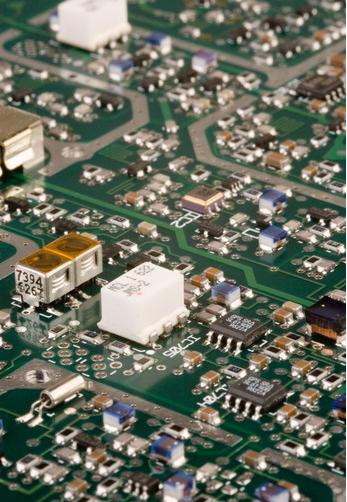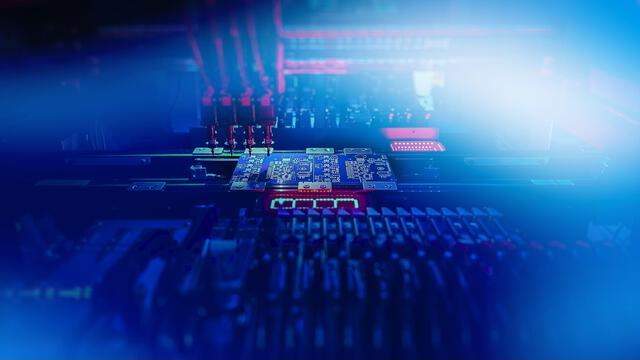Content Menu
● Understanding SMT Production Lines
● Key Benefits of Fully Automatic SMT Production Lines
>> 1. Increased Throughput
>> 2. Enhanced Precision and Quality Control
>> 3. Reduced Labor Costs
>> 4. Improved Resource Utilization
>> 5. Flexibility and Scalability
● The Role of Technology in Enhancing Efficiency
● Challenges and Considerations
● Future Trends in SMT Automation
● Conclusion
● FAQ
>> 1. What is an SMT production line?
>> 2. How does automation improve quality in SMT manufacturing?
>> 3. What are the main components of a fully automatic SMT line?
>> 4. What challenges do manufacturers face when implementing fully automatic SMT lines?
>> 5. How does AI contribute to SMT manufacturing efficiency?
In the fast-paced world of electronics manufacturing, efficiency is paramount. Surface Mount Technology (SMT) production lines have revolutionized the assembly of printed circuit boards (PCBs), enabling manufacturers to produce high-quality electronic components with speed and precision. A fully automatic SMT production line integrates advanced technologies and automation to streamline processes, reduce labor costs, and enhance overall productivity. This article explores how a fully automatic SMT production line improves efficiency across various dimensions.

Understanding SMT Production Lines
SMT production lines are designed to assemble electronic components onto PCBs using automated processes. These lines consist of several interconnected machines that work in harmony to complete the assembly process. The main components of a fully automatic SMT production line include:
- Solder Paste Printer: Applies solder paste to the PCB pads.
- Pick and Place Machine: Accurately places surface mount devices (SMDs) onto the PCB.
- Reflow Oven: Melts the solder paste to create electrical connections between components and the PCB.
- Automated Optical Inspection (AOI): Inspects the assembled PCBs for defects.
- Conveyor Systems: Transport PCBs between different stages of production.
By automating these processes, manufacturers can achieve higher throughput, improved accuracy, and reduced operational costs.
Key Benefits of Fully Automatic SMT Production Lines
1. Increased Throughput
One of the most significant advantages of a fully automatic SMT production line is increased throughput. Automated machines operate continuously without breaks, allowing for higher production rates compared to manual assembly. For instance, advanced pick-and-place machines can place thousands of components per hour, significantly reducing the time required to assemble PCBs.
Moreover, the ability to run multiple shifts without human fatigue means that production can continue around the clock. This capability is particularly beneficial in industries where demand is high and time-to-market is critical.
2. Enhanced Precision and Quality Control
Automation minimizes human error, which is a common issue in manual assembly processes. Fully automatic SMT lines utilize high-precision robotics and sophisticated software to ensure that components are placed accurately on the PCB pads. This precision leads to fewer defects and higher quality products. Additionally, integrated inspection systems like AOI can detect defects in real-time, allowing for immediate corrections before products move further down the line.
The implementation of closed-loop feedback systems also contributes to quality control by continuously monitoring processes and making adjustments as needed. This ensures that any deviations from desired specifications are promptly corrected, maintaining high standards throughout production.
3. Reduced Labor Costs
With a fully automated system, the need for manual labor is significantly reduced. This not only cuts labor costs but also alleviates the dependency on skilled workers who may be harder to find or retain. Automation allows manufacturers to allocate their workforce more efficiently, focusing on areas that require human oversight rather than repetitive tasks.
Additionally, training costs associated with onboarding new employees can be minimized as fewer workers are needed for assembly tasks. The workforce can be redirected towards quality assurance roles or maintenance of automated systems, which are essential for sustaining production efficiency.
4. Improved Resource Utilization
Fully automatic SMT lines optimize resource utilization by maintaining continuous production runs without frequent manual adjustments. This leads to less downtime and more efficient use of materials and equipment. For example, automated systems can adjust parameters in real-time based on production needs, ensuring that resources are used effectively without waste.
Furthermore, inventory management becomes more streamlined with automation. Automated systems can track component usage in real-time, helping manufacturers maintain optimal inventory levels and reducing excess stock or shortages that could disrupt production.

5. Flexibility and Scalability
Modern SMT production lines are designed with flexibility in mind, allowing manufacturers to switch between different products with minimal downtime. This adaptability is crucial in today's fast-changing market where demand for various electronic devices can fluctuate rapidly. Automated systems can be reprogrammed easily to accommodate new designs or product variations.
This scalability means that manufacturers can respond quickly to market demands without significant investments in new equipment or extensive retraining of staff. As new models or technologies emerge, companies can adjust their production lines accordingly without losing valuable time or resources.
The Role of Technology in Enhancing Efficiency
The integration of advanced technologies plays a crucial role in improving the efficiency of fully automatic SMT production lines:
- Data Analytics: Utilizing big data analytics helps manufacturers monitor production performance in real-time, identify bottlenecks, and optimize workflows accordingly. By analyzing data trends over time, companies can make informed decisions about process improvements and resource allocation.
- Artificial Intelligence (AI): AI-driven systems can predict maintenance needs and optimize machine settings based on historical data, further enhancing efficiency and reducing downtime. AI algorithms can analyze vast amounts of data from various sensors within the production line to identify patterns that may indicate potential issues before they become significant problems.
- Machine Learning: Continuous learning algorithms can analyze past performance data to improve future operations, leading to better yield rates and fewer defects over time. As these systems learn from previous cycles, they become increasingly adept at making adjustments that enhance overall productivity.
- Internet of Things (IoT): IoT-enabled devices allow for seamless communication between machines on the production line, enabling real-time monitoring and control. This connectivity facilitates proactive maintenance strategies by alerting operators about potential failures before they occur.
Challenges and Considerations
While fully automatic SMT production lines offer numerous benefits, there are challenges that manufacturers must consider:
- Initial Investment Costs: The upfront costs associated with purchasing and installing automated systems can be significant. However, these costs are often offset by long-term savings through increased efficiency and reduced labor expenses.
- Maintenance Requirements: Automated systems require regular maintenance to ensure optimal performance. Manufacturers must invest in training staff for maintenance tasks or hire specialized technicians who understand the intricacies of automated machinery.
- Integration with Existing Systems: Transitioning from manual or semi-automatic systems to fully automated ones may require significant changes in workflow and staff training. Ensuring compatibility between new automated systems and existing equipment is critical for a smooth transition.
Future Trends in SMT Automation
As technology continues to evolve, several trends are shaping the future of fully automatic SMT production lines:
- Collaborative Robots (Cobots): Unlike traditional robots that operate independently from human workers, cobots are designed to work alongside humans safely. They can assist in tasks such as loading materials or performing inspections while allowing operators to focus on more complex duties.
- Advanced Robotics: Innovations in robotics technology will lead to even greater precision and speed in component placement. Future robots may incorporate vision systems that allow them to adapt dynamically based on real-time feedback from their environment.
- Sustainability Initiatives: As environmental concerns grow, manufacturers are exploring ways to make their operations more sustainable. Fully automatic SMT lines will likely incorporate energy-efficient technologies and practices aimed at reducing waste throughout the manufacturing process.
- Customization Capabilities: The demand for personalized electronics is rising; thus future SMT lines will need enhanced capabilities for customization without sacrificing efficiency or speed.
Conclusion
A fully automatic SMT production line represents a significant advancement in electronics manufacturing technology. By increasing throughput, enhancing precision, reducing labor costs, improving resource utilization, and providing flexibility, these automated systems enable manufacturers to meet the demands of an increasingly competitive market effectively.
As technology continues to evolve, embracing automation within SMT production lines will be crucial for companies aiming to enhance their operational efficiency while maintaining high standards of quality.

FAQ
1. What is an SMT production line?
An SMT production line is a manufacturing setup that automates the assembly of electronic components onto printed circuit boards (PCBs) using surface mount technology.
2. How does automation improve quality in SMT manufacturing?
Automation reduces human error through precise robotic placement and integrated inspection systems that ensure defects are caught early in the process.
3. What are the main components of a fully automatic SMT line?
The main components include a solder paste printer, pick-and-place machine, reflow oven, AOI system, and conveyor systems for transporting PCBs.
4. What challenges do manufacturers face when implementing fully automatic SMT lines?
Challenges include high initial investment costs, ongoing maintenance requirements, and potential integration issues with existing systems.
5. How does AI contribute to SMT manufacturing efficiency?
AI enhances efficiency by predicting maintenance needs, optimizing machine settings based on data analysis, and continuously improving operational workflows.




















